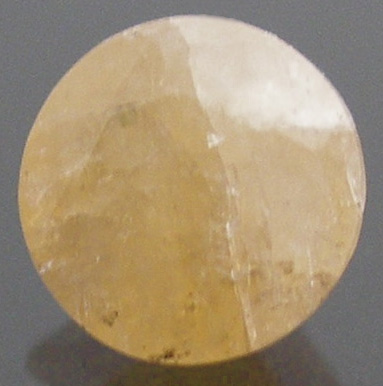Kovdorskite

Kovdorskite
(From Russia. Weight: 0.25 carats)
Image © supplied by Woodmansee* Gems
Kovdorskite gemstones are extremely rare and are rarer as faceted gemstones. Kovdorskite is hence extremely sought after because of this rarity and also because of the unusual double coloring. Some Kovdorskite crystals display twin coloring with pale blue coloring in the center and pink coloring on the terminations.
Kovdorskite History & Etymology:
Kovdorskite is a relatively recent discovery. Kovdorskite was first discovered in the Kovdor massif in Russia. Kovdorskite hence derives its name from the area in which it was first discovered. Kovdorskite was formally chronicled by the IMA in 1980.
Kovdorskite Occurrence:
Kovdorskite as a mineral and as crystals is extremely rare. Kovdorskite are found in only one locality in the world. Kovdorskite are found only in Kovdor massif in the Kola Peninsula in Murmanskaja Oblast’ in the Northern region of Russia. Apart from yielding clear crystals of Kovdorskite this area also yields a variety of other rare earth minerals and elements which are indigenous to this locality.
Kovdorskite because of the rarity are sought after by gemstone experts in Russia and other countries also because of the stunningly beautiful pale blue and pink coloring.
Kovdorskite Properties:
Kovdorskite is composed of hydrated magnesium phosphate carbonate hydroxide and hence has a molecular weight of 486 grams. Kovdorskite contains 13 percent magnesium, 38 percent aluminum, 1 percent beryllium and 46 percent oxygen. The Kovdorskite mineral is classified as phosphate mineral and is related to the Kovdorskite-Gatumbaite Series.
Kovdorskite displays orthorhombic as well as monoclinic pyramidal and prismatic properties. Kovdorskite exist in their natural form as crystals with rough prismatic structure. The crystalline masses of Kovdorskite mineral are at least 2 cm in size and have granular texture. Kovdorskite do not display cleavages but are brittle due to the uneven and irregular fracturing. The fracturing on Kovdorskite can also be sub conchoidal.
The Moh’s hardness of Kovdorskite crystals is 4 while the density of Kovdorskite crystals is just 2.3 g/cm3. Kovdorskite do not display properties of luminescence and are neither radioactive. Kovdorskite crystals are usually available as colorless crystals but pale to bright pink coloring in the crystals is also observed. Pale blue coloring in the crystals is also seen, extremely rare crystals of Kovdorskite have twin coloring where the center of the crystal has a pale blue coloring while the terminations are a stunning pale pink.
Kovdorskite range from being transparent to translucent with a vitreous luster. The refractive index of Kovdorskite crystals varies between 1.52 and 1.54. The birefringence of Kovdorskite crystals is at 0.022. Kovdorskite crystals display extremely weak dispersion without pleochroism.
The extremely rare mineral Kovdorskite occurs in iron ore deposits which have alkaline intrusions hence Kovdorskite are only found in the Kovdor massif in Russia. Twin-colored crystals of Kovdorskite are extremely expensive with the price running into hundreds of dollars for a fraction of a carat.
Back to the Gemstones List home page - over 160 gemstones explored!
Please feel free to link to this page - copy / paste the text below: (click to select)
Privacy Policy | Cookie Policy | GDPR | About This Site / Terms

© gemstoneslist.com 2018


